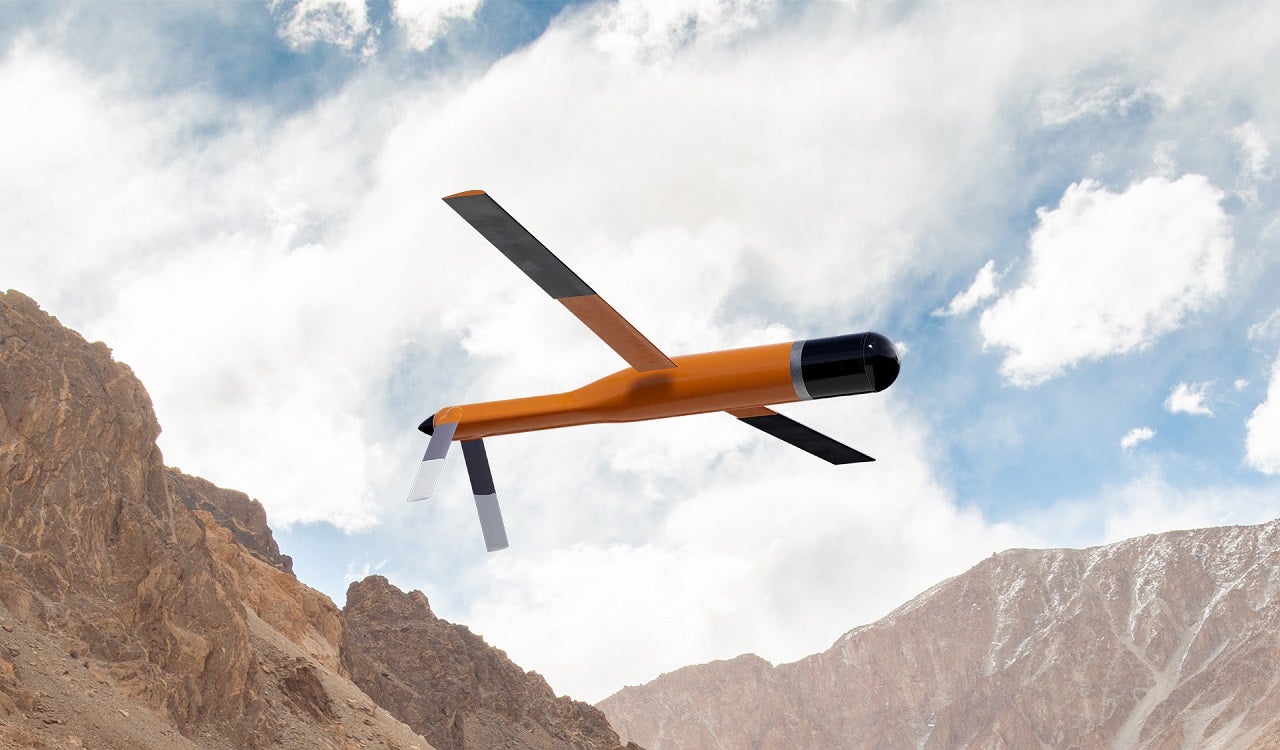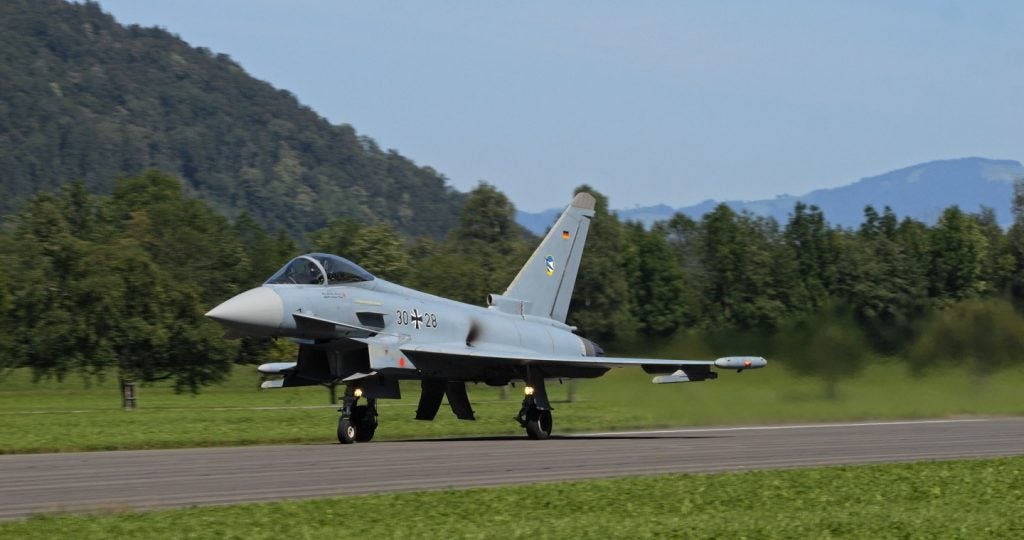
Detecting and defeating uncrewed aerial systems (UAS) is an increasing challenge for armed forces worldwide.
From handheld devices like those used by Belgian security forces during President Biden’s visit to a flying counter-drone system devised by Lockheed Martin, counter-UAS technology is becoming more pervasive as both military and civilian forces face a growing aerial threat.
From kinetic effectors to jamming and directed energy, there are numerous ways to ‘kill’ a UAS. However, different systems are needed to fill various roles and often, a layered approach is required to ensure security.
Recent conflicts in Ukraine, Syria and the war between Azerbaijan and Armenia have shown how critical UAS can be to achieving military advantages in both a strike and reconnaissance role.
As UAS and counter-UAS systems develop, tactics for their use are also becoming more sophisticated, with Turkey recently detailing the use of decoy aircraft to draw out the position of advanced air defence systems allowing them to be then targeted and destroyed by UAS.
Lockheed Martin MORFIUS
At this year’s AUSA Global Force Next, Lockheed Martin briefed the press about its Mobile Radio Frequency-Integrated UAS Suppressor (MORFIUS). The high-powered microwave-based interceptor is designed to be tube-launched enabling forces to deploy it on the move as they advance and maintain air cover.
How well do you really know your competitors?
Access the most comprehensive Company Profiles on the market, powered by GlobalData. Save hours of research. Gain competitive edge.

Thank you!
Your download email will arrive shortly
Not ready to buy yet? Download a free sample
We are confident about the unique quality of our Company Profiles. However, we want you to make the most beneficial decision for your business, so we offer a free sample that you can download by submitting the below form
By GlobalDataThe MORFIUS system is based on Area-I’s autonomous tube-launched UAS (ALTIUS) and Lockheed Martin says a key capability of the system is that it can fly out to meet a threat, rather than having to wait for the threat to come into the engagement range of an air defence system.
Lockheed Martin has not said exactly how powerful the systems high-power microwave is, however, the company has said its power use is similar to ground-based UAS interceptors.
One of the system’s key capabilities is to engage drone swarms at range before they can overwhelm defences.
Like many counter-UAS systems, MORFIUS is designed to work as part of layered defences and within existing and future command and control systems.
Commenting on MORFIUS, Lockheed Martin director of integrated air and missile defence advanced programmes Charley Brown said: “We’ve focused on implementing agile development processes, which have allowed us to integrate MORFIUS into new command and control systems within weeks.
“We’ve got a robust small business and commercial industry team that helps us continually rise to this challenge alongside our engineers. We’re very proud of the team we’ve assembled and continue to acknowledge the critical contributions of our partners to help enable this capability.”
The ALTIUS base vehicle gives MORFIUS the flexibility to be launched from aircraft like the C-130, other larger UAS, helicopters and ground vehicles, giving the interceptor flexibility to be used across multiple domains.
Lockheed Martin C-UAS business development lead Rebecca Schwartz said: “The team has proven their ability to quickly adapt to new architectures or configuration requirements to meet customer needs,
“The C-UAS landscape is constantly and rapidly evolving, so adaptability and flexibility, while maintaining effectiveness against new threats is critical. Focusing on a system of systems approach that brings together a modular set of solutions will help enable this without being costly as upgrades are needed. With this in mind, we built MORFIUS to be a plug-and-play capability to easily integrate into a variety of end-to-end systems.”
Leonardo DRS M-LIDS
Preparing to meet the UAS threat, US Army soldiers from the 4th Infantry Division recently participated in its first counter-small UAS home-station training session.
During the training, soldiers simulated operating the new Mobile-Low, Slow, Small Unmanned Aerial Vehicle Integrated Defeat System (M-LIDS). M-LIDS is a system of sensors and shooters developed by Leonardo DRS Sustainment Systems that is mounted on the Mine-Resistant Ambush Protected (MRAP) vehicle.
Systems integrator for the 1st Stryker Brigade Combat Team, Chief Warrant Officer 2 Randy Jones, said: “There are lots of enemy UAS threats that are out there on a pretty regular basis and that’s likely what we’re going to be faced with.
“It’s really great to be able to have that opportunity to execute the training, and have the time to digest that information, because once we do get downrange, we don’t always have a lot of time to learn a new system.”
M-LIDS is mounted across two MRAPs with one carrying mast-based EO/IR sensors and the other carrying a reconfigurable remote weapons station. The system uses Moog’s Reconfigurable Integrated-weapons Platform (RIwP) turret that is also seen on US Army’s Initial Maneuver Short-Range Air Defense (IM-SHORAD) Stryker vehicle.
In 2019, then-Secretary of Defense Mark Esper and former Army Secretary Ryan McCarthy established a Joint C-sUAS Office (JCO) through which the US Army is developing plans, technologies, training and doctrine for meeting the UAS threat.
The Department of Defense also released a c-UAS strategy that aimed to provide a framework for addressing small drone threats and outlined three lines of effort to develop innovative solutions, ‘defend the force with the provision of mission-ready forces that are able to deter and defeat UAS threats and building the team by leveraging partnerships’.
Jones said that the training would help prepare soldiers for what they may encounter in the field and teach c-UAS skills to personnel who aren’t used to drone threats.
Jones added: “Many of these soldiers in the class are your typical infantry soldiers who don’t deal with a complex system of systems like this on a regular basis as well as enemy UAS threats, they’re focused on a lot more of your standard infantry tasks.
“This is a really eye-opening experience for a lot of them to understand the threat that’s out there, and understand this system, how we can use [it] to counter these threats.”






